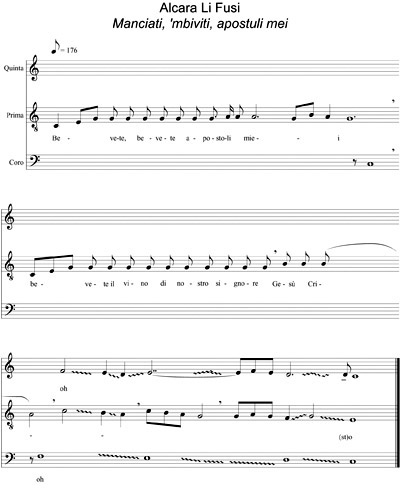|
My last example of Sicilian polyphony comes from Alcara Li Fusi, a small municipality in the Nebrodi hills situated in the province of Messina. Alcara Li Fusi possesses a pulsating as well as vast musical tradition: devotional practices and festive rites spread throughout the yearly cycle survive here. This piece is performed during the liturgical offices of the Holy Thursday in which the twelve brothers/apostles together with the officiating priest enact the Last Supper of Christ. The text announces the words of the priest at the moment of the consecration:
From the musical point of view we are faced with a very peculiar case. The piece is wholly built upon the 5th Gregorian psalmodic tone and, strangely, the melody is not wholly performed by the leading soloist, but by the end of the stanza passes on to the second singer, while the first one accompanies him in parallel at a distance of upper fifth and third. However, in this case too it is a matter of a piece with a polyphonic three-part structure.
The segmentation of the phrases is the one typical of the Gregorian chant and the text is intoned almost entirely upon the chord of recital. Only in the second half of the last word of each phrase does there appear the melismatic melodic development by linked degrees and the song is brought back with it, descending in the finale.
|

